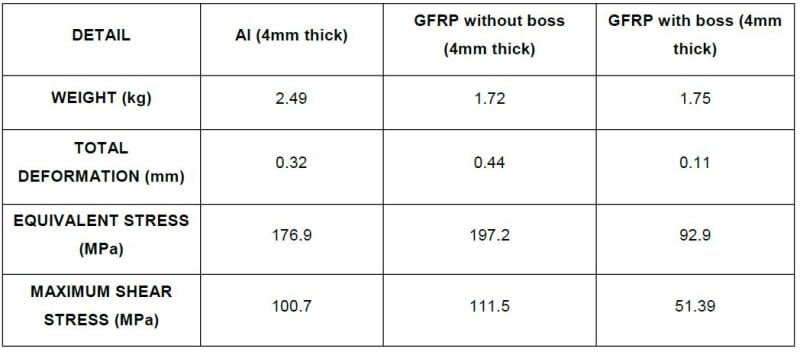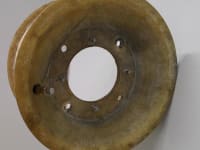The work involves design and manufacturing of a wheel for an All-Terrain Vehicle using a Glass Fiber Reinforced Polymer (GFRP) material. The main aim is to replace the conventional Aluminium alloy wheel with that of a lightweight alternative. GFRP is one such lightweight alternative, with fiber glass reinforcement and epoxy matrix, coming under the composites category which has high strength to weight ratio. With GFRP, a 30% weight reduction was achieved.
For any vehicle, it is required to minimize the unsprung mass constituting it, for good handling and control. Also decreasing the weight is an added advantage when it comes to reducing fuel consumption. Since the design involves prior knowledge about various details regarding an automobile, like the location of CG, wheel base, wheel track, an All-Terrain Vehicle, the specifications of which were known, was selected and designed according to it. The design of the wheel was done according to various forces acting on the wheel of the selected ATV. i.e., Wheel load cases were developed to correctly determine the forces that will be imparted on the wheel by the tyre. This was similar to external pressure acting on a cylindrical shell. Then the stiffness of current wheel for developed load cases was ascertained. This was followed by designing the composite wheel to exceed the specifications of the current wheel. A static analysis was performed using ANSYS. The wheel was then fabricated using Hand layup process, owing to its simplicity. Chopped fiber mat (350PB) was selected, as the fiber is dispersed throughout the matrix and the composite can be considered isotropic. After completion of the wheel fabrication, the wheel was tested in real time conditions.
Due to lack of specific testing rig, the wheel was tested by fixing it to the actual ATV for which it was designed. Also the design was theoretically verified and validated using ANSYS workbench module. Theoretically, the weight of the Aluminium wheel was 2.5 kg. But GFRP Composite wheel weighed only 1.75 kg theoretically. However during manufacturing, due to lack of vacuum bagging facility and adequate labor skill, it was not possible to remove the excess resin from the composite and to control the dimensions accurately. This contributed to variations of the value between the theoretically calculated weight and the actual weight. However if the wheel is to be manufactured for mass production using processes like compression molding, it will be easier to control the volume fraction, dimensions of the wheel and hence the weight will be similar to the theoretically calculated value.
Like this entry?
-
About the Entrant
- Name:Shanmuga Srinivas Ramkumar
- Type of entry:teamTeam members:R.Shanmuga Srinivas
S.Sundaresh - Software used for this entry:ANSYS Workbench
- Patent status:none








